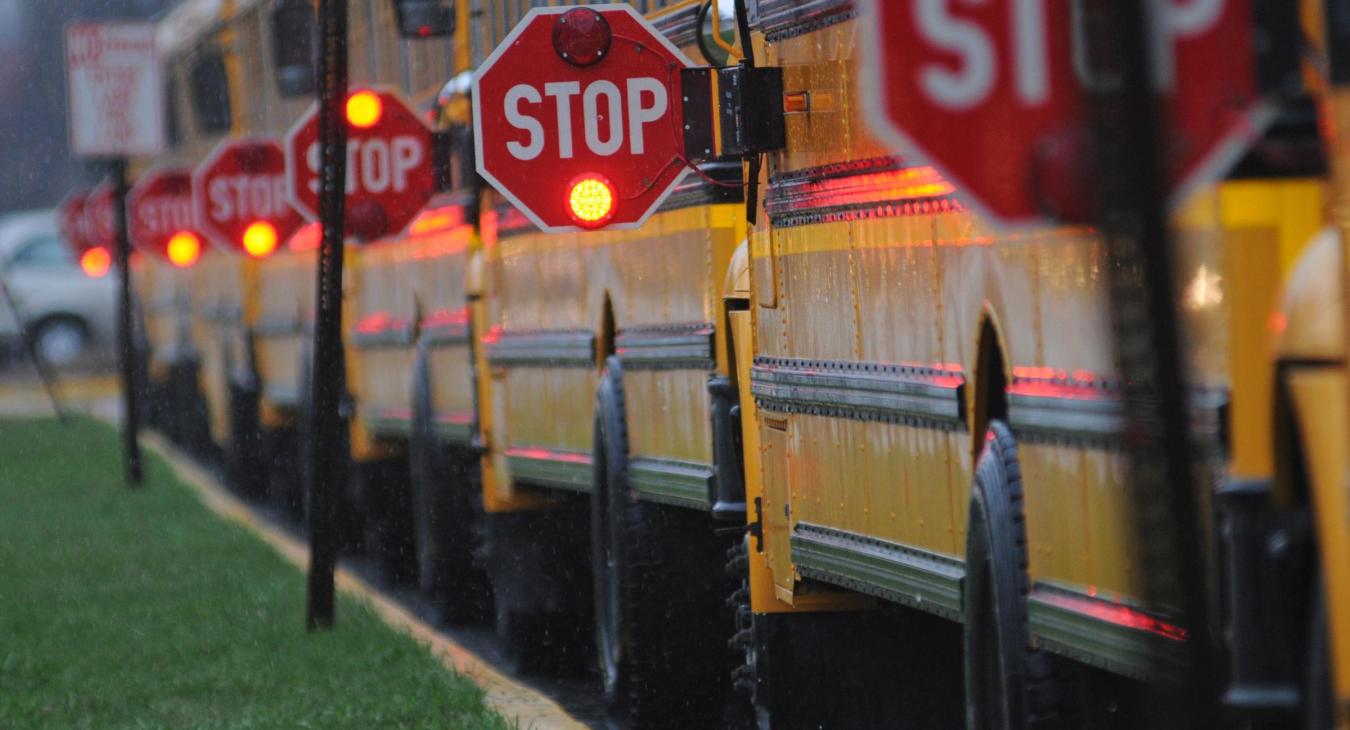School buses are the safest way for students to get to school, but part of that safety depends on the other vehicles around them.
New teen drivers may encounter school buses on the road for the first time in the coming weeks and will need to be prepared. In order to keep themselves and bus passengers safe, your teen must know how to drive around school buses, when to slow down for them and when to stop.
Here are some tips your teen should know about sharing the road with school buses.
Watch for students
School buses are specially designed to protect their riders, but when you see a school bus you are also likely to see students getting on and off of it. Young children can be unpredictable road users, so your teen must be on the lookout for students walking, biking and crossing the road, both in and out of crosswalks.
This is especially important if your teen is backing out of a driveway or another area with a limited view. Neighborhood bus stops can be busy areas but they may not be clearly marked. It is up to every driver to keep an eye out for pedestrians and anticipate their actions.
Listen to the bus
Bus drivers can have a lot to say in order to keep their passengers safe and everyone behind the wheel needs to be listening. According to NHTSA, two of the most common messages from bus drivers are given through flashing yellow lights and flashing red lights.
The flashing yellow lights mean the vehicle is preparing to stop, likely to pick up or drop off students. When your teen sees these lights, they must prepare to stop, as well. The flashing red lights are paired with an extended stop arm on the bus and indicate that the bus has stopped and students are getting on or off. These lights and this stop arm mean that your teen must come to a complete stop and wait in order to keep students safe.
Your state may have additional or unique laws about driving near school buses, so take some time to review them with your teen. A larger roadway with multiple lanes on each side, for example, might or might not require drivers to stop when a bus has stopped in the opposite direction.
When in doubt, be cautious
New driving situations can be confusing and stressful for teens, but the best way to prepare is to know what to expect and to always use caution. When driving with your teen, point out school zones and bus stops in your neighborhood so they are not caught off guard by them, and reinforce the importance of always obeying traffic laws. Let your teen know that it is always best to use caution in new situations, slow down and pay special attention to potential hazards.
It is also crucial that you set the example yourself. If your teen sees you speeding in a school zone – even when there are no students present – they may get the idea that these laws are optional. The back to school season can be hectic, especially for new drivers, so your teen needs a role model to follow. Set the example and you can help keep your teen and bus riders safe.
Source: National Safety Council, a membership organization dedicated to protecting life and promoting health.

